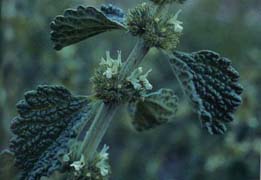Lorn Brace-Wessel
Healing Gardens
Weekly Reflection #2
Cultural systems are man made. A culture is just a pattern of activity that is constantly played out because of the symbology and meaning it has to the people who take part in it. Natural Systems are all systems that happen beyond human control. There are many natural systems within our own bodies that we have no control over. Many cultural systems are governed by and only occur because of natural systems (like a certain crop might grow well in a certain area, so it might be more culturally significant to the people that live there).
I don’t like calling the use of medicine healing; most things that are considered medicine can have healing properties or be poisonous depending on dose. Agents of medicine (i.e. doctors, shamans, evangelical priests, etc.) are all products of their cultural surroundings. They use the medicines and beliefs that are available and standard to their culture. If you tell someone you have an upset stomach they might tell you to take some pepto bismol, someone somewhere else might recommend some chamomile and mint tea.
This has been a good week for the garden and me. I’ve gotten quite a bit more of an idea of what needs to be done and what can be done within my area. I realized we already have chicken of the woods growing, and might be able to add some other fleshy fungi to our area such as oyster mushrooms possibly. I have been doing a lot of reading about outdoor mushroom cultivation and it seems quite possible. I was inspired by the Natural History of Puget Sound Country to attempt to spawn some type of mycorrhizal fungi to the existing trees. Mycorrhizal fungi work in a symbiotic relationship with the trees, supplying or taking away certain nutrients and minerals from each other that neither can deal with on their own.
The plants in the reading that I knew about this week are:
Potato (Solanum tuberosum; Keeping It Living, p 21), Red Huckleberry (Vaccinium parvifolium; KIL, p 31), Rhododendron (Rhododendron macrophyllum), Kinnikinnik (Arctostaphylos x media), Hazlenut (Corylus cornuta) (Natural History of Puget Sound Country, p 162), Salmonberry (Rubus spectabilis), poison oak (Rhus diversiloba), prickly pear cactus (Opuntia fragilis), blueberry (Vaccinium oxycoccus) (NHoPSC, p 163), Sword Fern (Polystichum munitum) (NHoPSC, p 166), wild ginger (Asarum caudatum) (NHoPSC, p 169), skunk cabbage (Lysichitum americanum) (NHoPSC, p 170), fly amanita (Amanita muscaria), shaggy mane (Coprinus comatus) (NHoPSC, p 177), yellow chantrelle (Chantarellus cibarius) (NHoPSC, p 178), and foxglove (Digitalis purpurea) (NHoPSC, p 190)
Edit: forgot to include final question...
